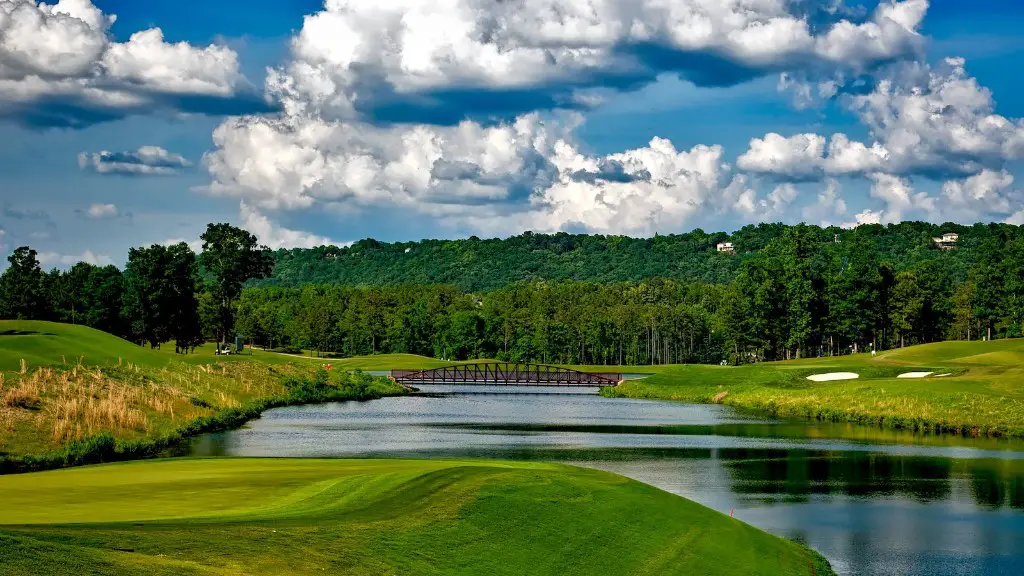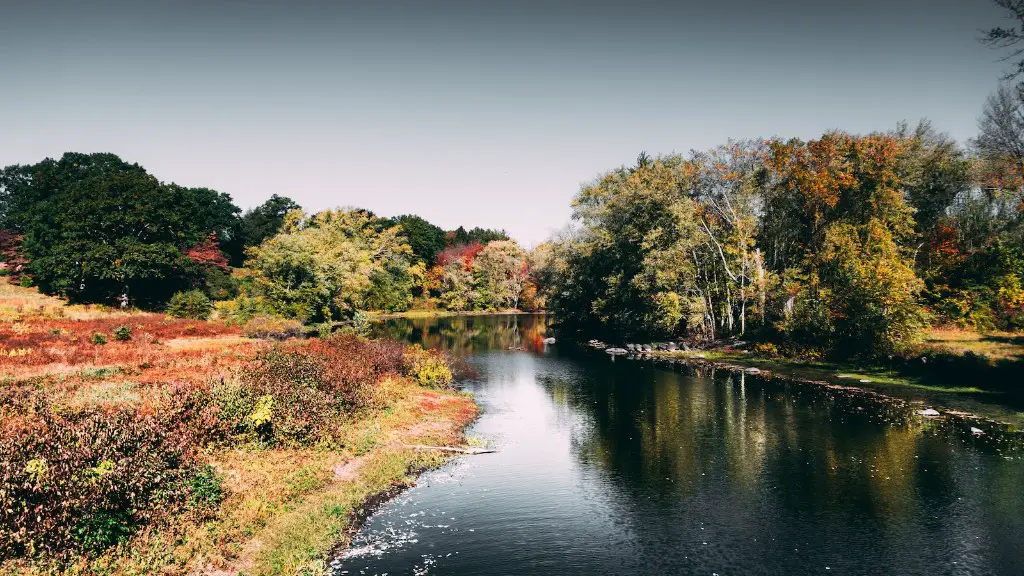Overview
The Mississippi River is the second longest river in the United States, stretching for a total of 2,340 miles. It is the fourth longest river system in the world, and runs through ten different states, from its source in Lake Itasca in Minnesota to the Gulf of Mexico. It is a hugely influential river system, providing drinking water and irrigation to millions of people and creating habitats for thousands of species of fish and birds. In this article, we’ll take a look at the various states that the Mississippi River runs through and the importance of the river in the US economy.
History
The Mississippi River’s importance has shaped a large part of American history. From the earliest Native American settlements along the banks of the river, to the early French explorers who used the river as a water route to the Gulf of Mexico. During the 1800s, the river was a major route for transporting goods and people from the northern part of the country to southern states. It was also a route for steamboats and ferry crossings, and allowed people to set up trading posts and share cultures.
States
The course of the Mississippi River runs through ten US states. It starts its journey at Lake Itasca in Minnesota and then snakes its way south through the states of Wisconsin, Iowa, Illinois, Missouri, Kentucky, Tennessee, Arkansas, Mississippi, and Louisiana, before entering the Gulf of Mexico. Along its course, it connects with other minor rivers, such as the St. Croix, Wisconsin, and Illinois rivers. Its major tributaries are the Missouri River and the Ohio River.
Pollution
In recent years, the Mississippi River has been subject to increasing levels of pollution. This is due to a variety of factors, such as run-off from agricultural land, sewage, fertilizers, and other industrial chemicals and wastewater. This pollution is having significant effects on the river, from damaging the habitats of aquatic species to degrading the water quality, making it difficult for humans to use for drinking, fishing, and swimming.
Economic Impact
The Mississippi River is a crucial component of the US economy — it is estimated that it transacts more than $400 billion worth of cargo annually. It is also a key component of America’s agricultural economy, with many farmers relying on the river for irrigation, drinking water, and transportation of goods. Finally, it is also important to the tourism industry, as it attracts thousands of tourists each year who come to explore its depths and admire its natural beauty.
Environmental Challenges
The Mississippi River is facing a range of environmental challenges which present a threat not just to the river’s health, but also to its economic and social prosperity. These challenges range from the destruction of habitats and increased levels of pollution, to coastal erosion, water shortages and overfishing. In order to protect the river, measures need to be put in place to preserve its health, such as improved regulations and policies on water consumption, improved wastewater management and agricultural regulations, and the protection of key habitats.
Conservation Efforts
In recent years, a number of conservation efforts have been put in place to protect the Mississippi River. These range from state and national initiatives, such as the Mississippi River Water Quality Agreement and the Mississippi River Conservation Area, to grassroots efforts such as the Mississippi River Alliance. In addition, many schools and local groups have been working to educate people about the importance of protecting the river, and many organizations are working to carry out scientific studies to better understand the river’s impacts on the environment.
Importance to Humans
The Mississippi River is an important resource for humans, providing us with drinking water and water for agricultural use, as well as a natural habitat for many species of wildlife. The river is also of great cultural significance to many of the communities found along its course, providing hope and inspiration to those who live near it. Its importance was summed up by famed author Mark Twain when he wrote, ‘The face of the water, in time, became a wonderful book — a book that was a dead language to the uneducated passenger, but which told its mind to me without reserve, delivering its most cherished secrets as clearly as if it uttered them with a voice’.
Recreational Activities
The Mississippi River is a popular destination for recreational activities, such as fishing, boating, and swimming. It is also an important recreational route for kayakers, canoeists and white water rafters. Along its banks, there are many parks and campsites, where visitors can enjoy the river’s natural beauty and explore its depths.
The Mississippi River is a crucial component of America’s transportation infrastructure, with several major ports located along its banks. It is also used as a navigational route to transport goods and passengers between northern states and the Gulf of Mexico. The river provides the most direct and cost-effective way to move goods and services between the northern part of the country and the port cities located on the Mississippi Gulf Coast.
Environmental Benefits
The Mississippi River provides a range of environmental benefits. It is an important habitat for hundreds of species of fish, birds and other wildlife. It is also an important source of drinking water for many communities. In addition, flooding along the river’s course helps to replenish underground aquifers and increases soil fertility, which can boost agricultural production.
Biodiversity
The Mississippi River is home to a diverse range of wildlife, with more than 300 species of fish and thousands of species of birds, reptiles and amphibians calling the river home. Its habitats provide a unique mix of freshwater, saltwater and brackish water, making it a rich environment for the variety of species that live there.
Regional Collaboration
The preservation of the Mississippi River is a shared responsibility between the states and regions it is located in. Governments of these states have all taken steps to protect and preserve the river, as well as to collaborate with each other to ensure its future health. Much of this collaboration has focused on controlling pollution levels and improving habitats, as well as tackling the problem of soil erosion which can lead to increased levels of sediment in the water.
Conclusion
The Mississippi River is a vital natural resource for the United States, providing a range of economic, social and environmental benefits. It is also a vital link between the northern states and the Gulf of Mexico, allowing for the efficient transportation of goods and services. Its preservation is essential in order to ensure it continues to provide these benefits into the future, and efforts must be taken by state governments and individuals to protect and preserve the river.



